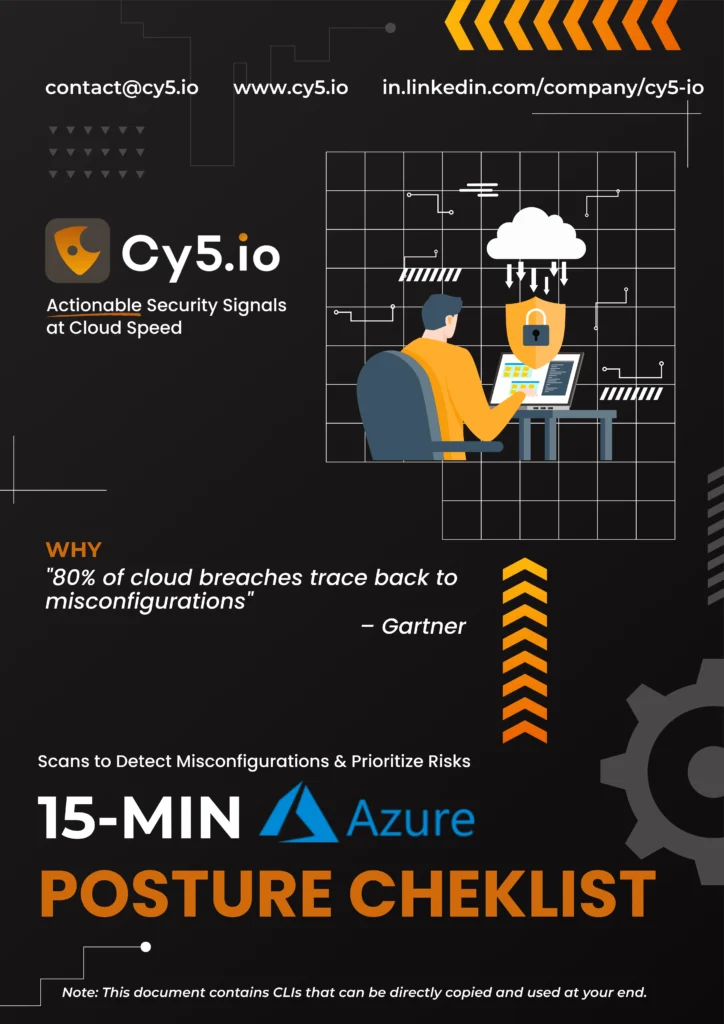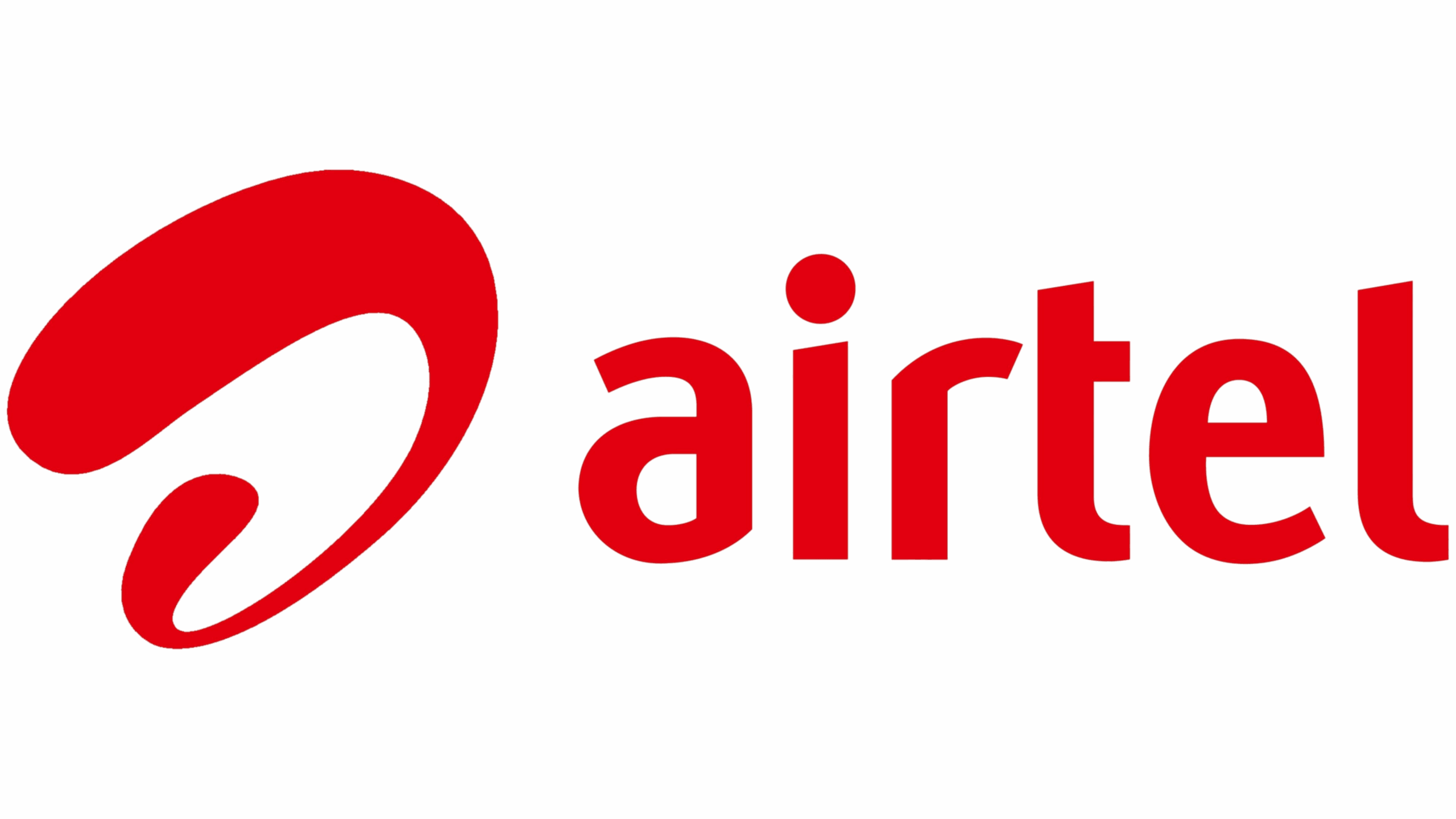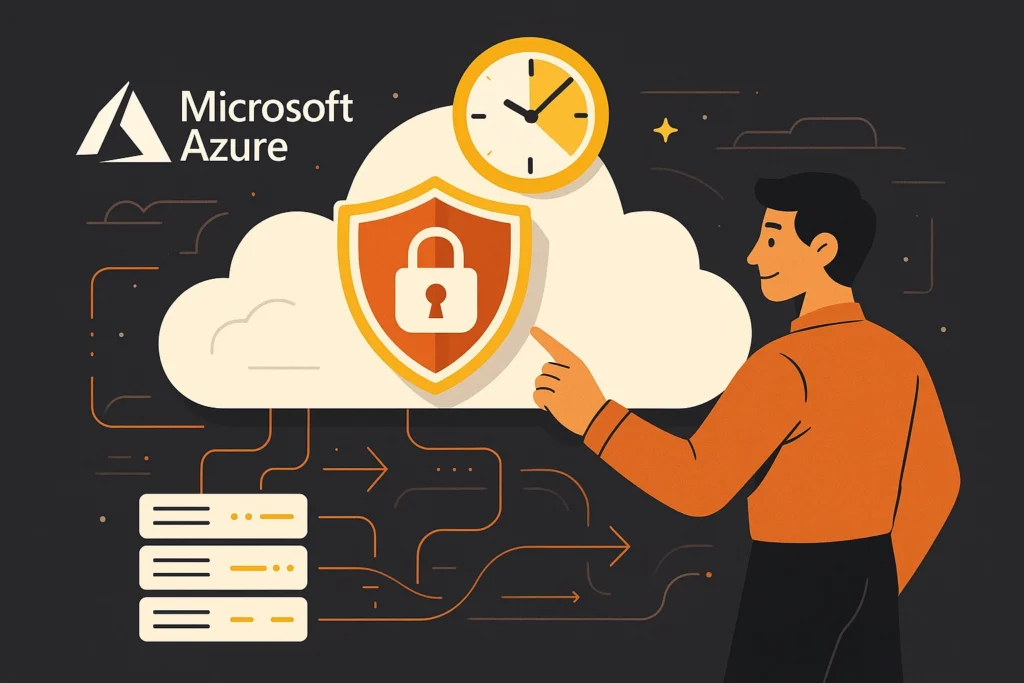Is Your Azure Environment Exposed?
“80% of Cloud Breaches Start with Misconfigurations.”
– Gartner
Download our free 15-min Azure Cloud Posture Checklist to find and fix critical risks—before attackers do.









Systematically harden your Azure environment with precision-engineered CLI validations. Execute targeted scans to eliminate public attack surfaces and enforce least-privilege IAM postures. Automatically verify cryptographic controls for data-at-rest while mapping configurations to MITRE ATT&CK tactics and CIS Azure benchmarks. Transform raw telemetry into auditable compliance evidence with infrastructure-as-code efficiency.


Detect open Storage accounts, public VMs, and unsecured AKS clusters with Azure CLI.

Identify Owner/Contributor role assignments and dormant service principals.

Verify TDE status for SQL/CosmosDB and disk encryption for Managed Disks.

Map controls to MITRE ATT&CK and CIS Microsoft Azure benchmarks.



Join leading security professionals who eliminated critical Azure cloud environment risks using our checklist.
A list of FAQs and PAAs in accordance with the prominent queries around conducting Azure Cloud Posture assessment. This can be achieved by utilizing the Do-It-Yourself (DIY) document created by Cy5 with a list of prominent categories and CLI scripts that anyone can use to carry out the assessment.
Azure CSPM continuously monitors cloud configurations to detect misconfigurations, compliance gaps, and security risks. It aligns with CIS benchmarks and Microsoft Cloud Security standards, helping teams enforce least-privilege access and prevent breaches from exposed resources.
Misconfigurations—like public IPs on VMs, open storage containers, and excessive IAM roles—create attack surfaces. Gartner reports that 80% of breaches originate from such errors, emphasizing the need for automated posture checks and remediation.
You can also Check Out CSPM in detail.
az vm list --query "[?powerState=='VM running'].{Name:name, PublicIP:publicIps}" -o table
This command lists running VMs with public IPs, helping identify internet-exposed assets.
az storage container list --account-name <name> --account-key <key> --query "[?properties.publicAccess!=null]" -o table
This reveals containers with public access settings, critical for preventing data leaks.
az sql server list --query "[?publicNetworkAccess=='Enabled']" -o table
az cosmosdb list --query "[?enablePublicNetworkAccess==true]" -o table
These commands flag databases with public endpoints.
Privilege drift occurs when identities gain excessive permissions over time. Use baseline snapshots and compare with current role assignments using:
az role assignment list --all --output json > current.json
diff baseline.json current.json
az ad sp list --query "[?appDisplayName!=null]" -o tsv | while read name id; do
az monitor activity-log list --offset 90d --query "[?caller=='$id']"
done
This flags dormant service principals with elevated roles.
az storage account show --name <account> --query "encryption.services.blob.enabled" -o tsv
Returns true if encryption is enabled, ensuring data-at-rest protection.
az disk list --query "[?encryptionSettingsCollection.enabled==false]" -o table
Identifies unencrypted disks that may expose sensitive VM data.
az monitor diagnostic-settings list --resource <RESOURCE_ID> --query "[].retentionPolicy.days"
Ensures audit trails meet compliance and forensic standards.
az monitor activity-log list --query "[?contains(operationName.value,'Delete') || contains(operationName.value,'SetIamPolicy')]" --offset 7d -o table
Flags destructive or privilege-escalating actions.
Embed CLI scripts into GitHub Actions or Azure DevOps pipelines. Fail builds on critical misconfigurations and exports findings to SIEM tools for continuous validation.
Each includes actionable CLI commands for rapid execution.